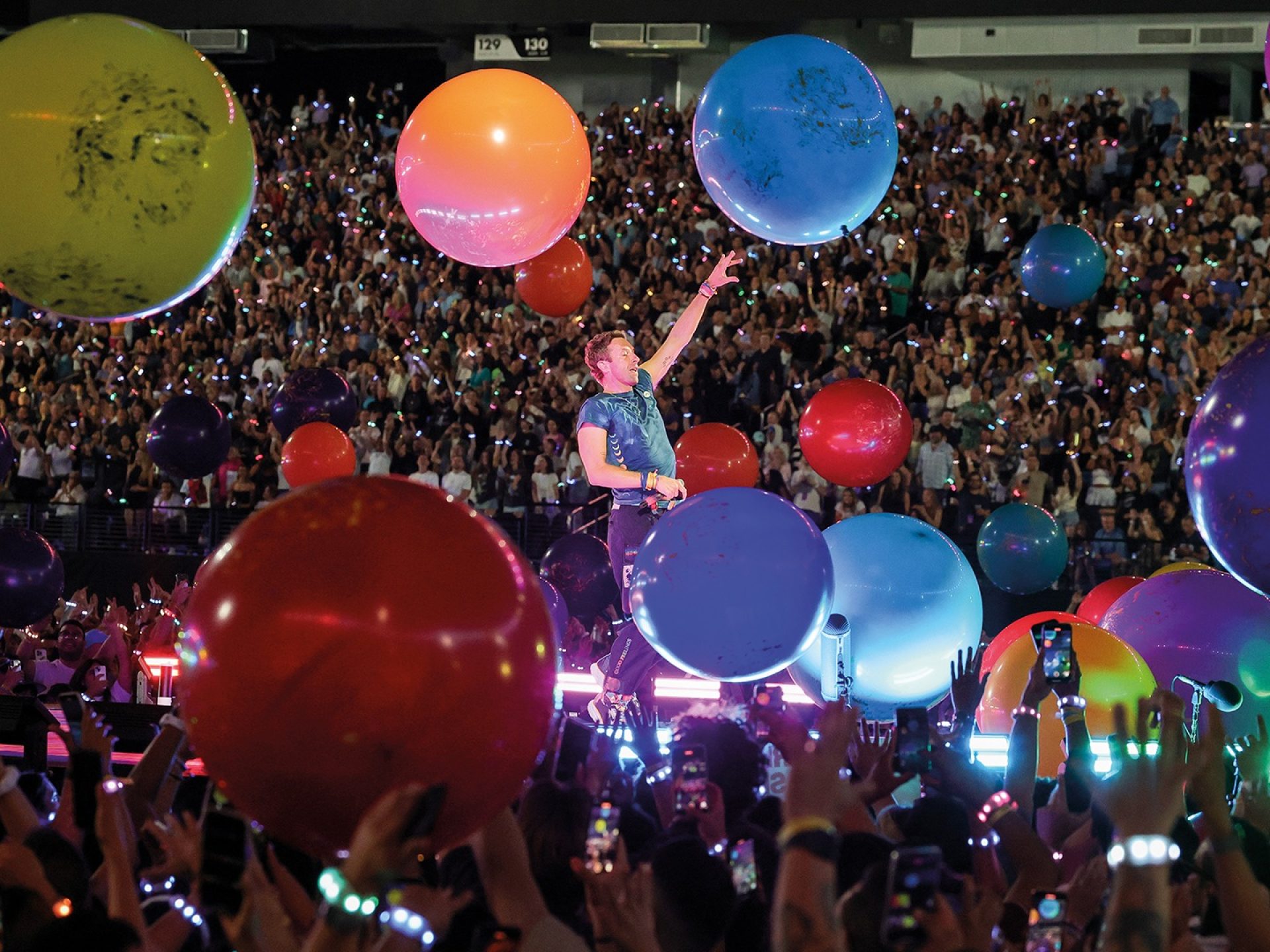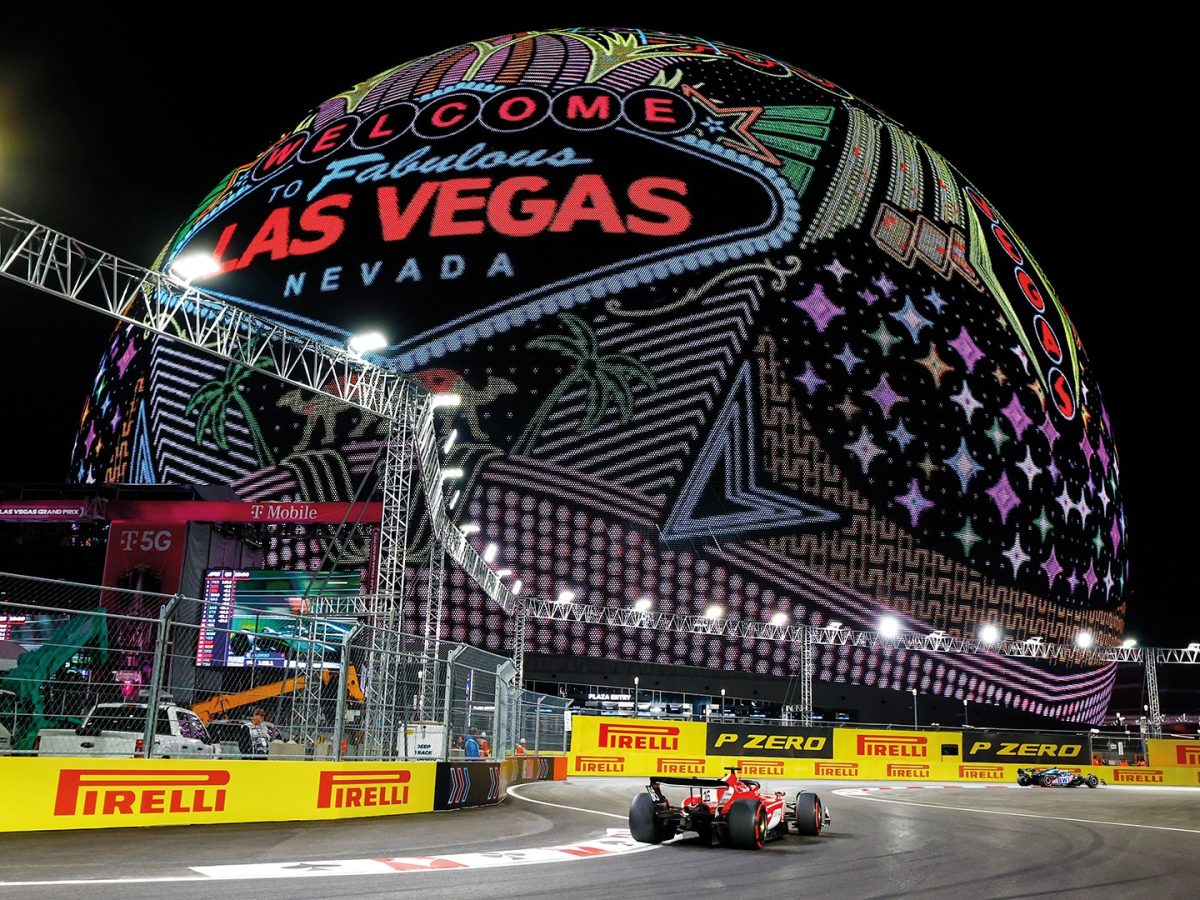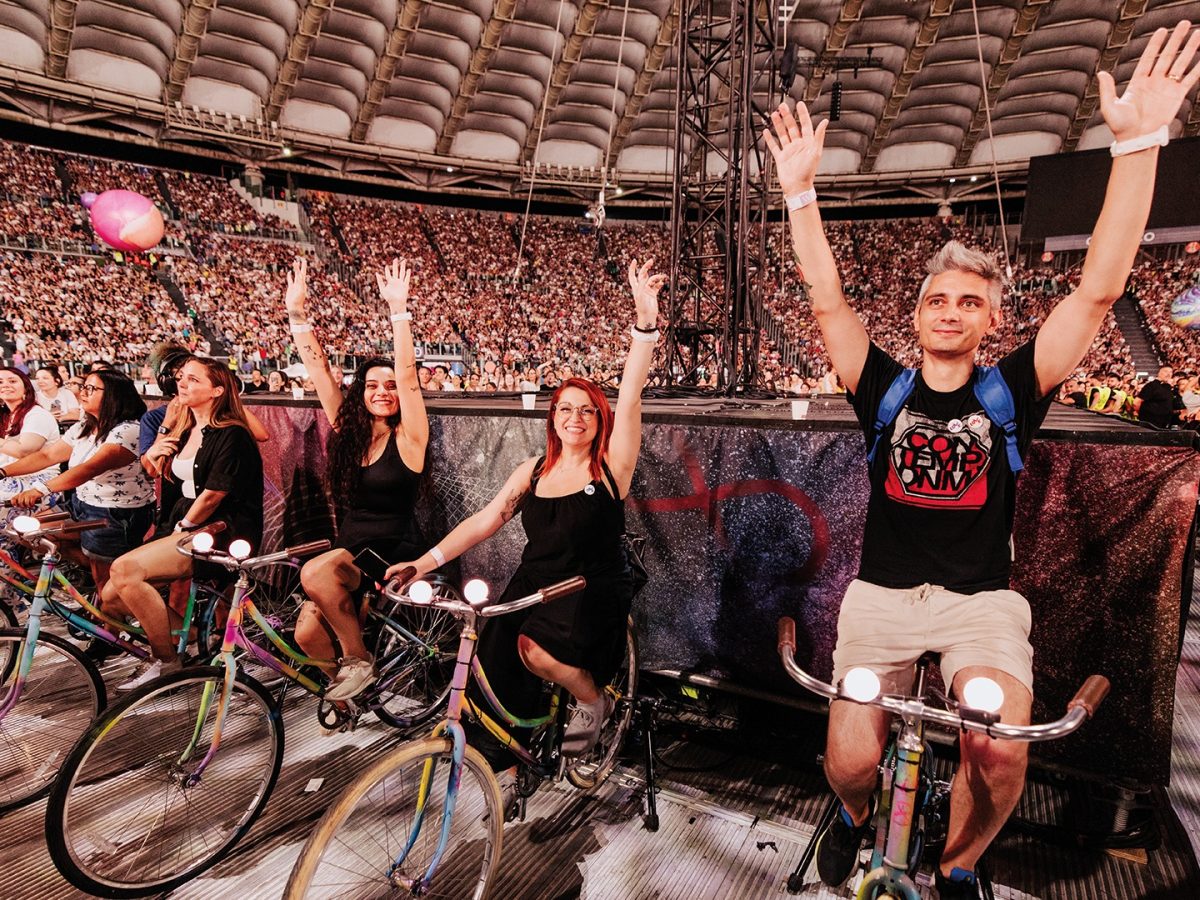October 16, 2025
Bigger Shows, Smaller Footprints

Taylor Swift’s recent Eras Tour was gargantuan in every way measurable. Spanning 149 shows in 51 cities across five continents, it broke the record for the highest-grossing tour of all time. It made a billionaire of Swift herself. Technically ambitious, it required around 90 trucks to transport the staging, costumes and equipment. And, crucially, it brought joy to the millions of fans who attended the sold-out shows in some of the world’s largest stadia. The problem was the air travel. There’s no getting around it: an international tour of this scale requires millions of air miles—for the artists, for the support team, and for many of the fans. During the 2024 leg of the tour alone, Swift’s private jet travel—just the singer and her immediate entourage—generated over 563 US tons (511 metric tonnes) of carbon dioxide, according to the United States Environmental Protection Agency.
Conscious of the need to drastically reduce their carbon footprint, stakeholders within the sports and entertainment industries are now searching for ever more ingenious ways to save energy. In the past, the responsibility for this has been shared between all the various experts working on venue projects. “Traditionally, architects would focus on designing lowcarbon buildings, while engineers would concentrate on energy use, and specialist consultants would advise on operational needs,” says Silvia Prandelli, senior principal at Populous. “A more integrated solution is needed. At Populous we provide a holistic solution for sustainable sports and entertainment experiences, driven by the user experience but optimised through a sustainable approach towards design from the earliest opportunity, and encompassing all aspects of energy consumption.”
Unlike most other design companies, Populous works across the entire life cycle of a venue, all the way from its creation to its day-to-day operation. Before their designers even put pen to paper, they consider the environmental impact of every single aspect involved. “This includes the location of a venue, and how it fits into an existing cityscape and energy ecosystem,” Prandelli explains. “It includes the travel impact of staff and spectators attending. It includes future event logistics, and the experience of the live event, including food and beverage.” Everyone who uses sports and entertainment venues—spectators, athletes, artists, media and employees—have a crucial role to play. The food and beverage offering can be locally sourced, for example, reducing the associated carbon emissions from delivery vehicles. Look how Levi’s Stadium in California (home to the San Francisco 49ers) operates an organic farm on its roof, with produce destined for the stadium concessions.
Sports retail is another area where sports clubs are making a positive impact. Many leading soccer clubs sell jerseys made from recycled polyester, for example, through manufacturers such as Puma and adidas. TV broadcasting companies and other media are actively working to address their environmental impact. British broadcaster Sky is a notable example, with its Sky Zero programme, running outside broadcast generators on bio-fuel, operating production services on renewable energy, and reducing the number of people and amount of equipment transported to events. Shining examples of this are Populous designed arenas such as Climate Pledge Arena in Seattle, USA, and Co-op Live in Manchester, UK. There is also a major new project, due to open in 2025, which will boast impressive green credentials. The Stade de la Meinau, in the French city of Strasbourg, is a renovation of soccer club Racing Club de Strasbourg Alsace’s existing stadium. As well as the use of upcycled airplane fuselages as sun shades in the main facade, there will be rainwater recycling facilities, biomass-powered heating, long-lasting LED lights, and around 1,000 square meters (10,760 square feet) of photovoltaic panels on the roof of its south stand.
Temporary venues and their ongoing re-use have reduced the carbon footprint of major events such as the summer and winter Olympics. At the 2024 Paris Olympics, only two of the venues were built from scratch—the rest were temporary or were already in place. In 2023, after the inaugural Las Vegas Grand Prix Formula 1 race, the grandstands from the temporary street circuit were dismantled and transported to another temporary venue—this time for cricket—close to New York City, before being repurposed for the Men’s T20 World Cup.
"Understanding our own impact, and seeking to minimize it, informs our understanding when helping others."
Playing surfaces can also have a huge impact. When Major League Baseball teams appeared at the Populous-designed London Stadium in 2023 and 2024—rare European fixtures—they played on reusable clay and synthetic turf which has now been stored away for future use when other MLB teams return to the UK capital.
There are similar drives toward sustainability within the music industry. American pop star Billie Eilish has tried to ensure the clothing merchandise she sells is as green as possible by using non-toxic dyes and unused textiles left over from production runs. One of the greenest pop bands of all is British outfit Coldplay. For their current Music of the Spheres Tour, they have encouraged fans to power the live show batteries by dancing on kinetic dance floors and by cycling on specially designed stationary bicycles. On their latest tours, Canadian and British singer-songwriters Michael Bublé and Ed Sheeran both switched to more efficient speaker systems, thereby reducing their greenhouse gas emissions.
Luke Howell is founder and director of Hope Solutions, an environmental consultancy for the entertainment industry. In collaboration with Coldplay, the Massachusetts Institute of Technology, and the entertainment companies Live Nation and Warner Music Group, he recently conducted a study to measure the environmental impact of live music events in the US and the UK. He tells Populous magazine the biggest surprise was that spectator travel accounts for up to 75 per cent of a concert’s carbon footprint. “That’s followed by energy use at the venue, and food and drink concessions,” he adds. “But here’s where it gets interesting: the impact varies dramatically, depending on the type, size, location, and even timing of the event.” Howell has some useful advice for venue operators: “For operational emissions—excluding audience travel—the focus is clear: reduce energy demand, improve efficiency, and transition to cleaner sources,” he stresses. “Many venues still rely on outdated heating, ventilation, and air-conditioning systems and inefficient lighting setups. Even modern LED lights can consume significant power if not properly specified. Smarter system design, better load management, and upgraded building controls can lead to substantial savings in both energy and cost. Often, it’s as simple as switching things off when they’re not needed— a surprisingly persistent oversight.”
Howell points out how sustainability isn’t simply a case of replacing old, inefficient equipment, however. It’s smarter planning that is required. “Coordinating logistics to minimize freight, and designing production setups that match energy availability can all reduce unnecessary consumption,” he says. “Newer venues have a real opportunity here. By integrating renewables, battery storage, and energy-efficient infrastructure from the ground up, they can support low-impact touring from the outset. Even small tweaks—like providing the right grid electrical connections where generator compounds are typically placed— can enable clean power alternatives without major redesigns.”
Commanding enormous respect from their adoring fans, famous musicians and athletes are in strong positions when it comes to changing the behaviour of their fans. In the run-up to live events, through their social media channels, they can easily encourage ticket-holders to travel on public transport, for example, instead of driving. Imagine the energy saved if everyone who attended the UEFA Women’s Euro 2025 at the various stadia across Switzerland in July were to leave their cars at home and travel by the country’s notoriously reliable train network instead.
For all these environmental drives to have an effect, however, they must be honestly reported and continuously monitored. Populous leads by example in this area. It tracks both its direct and indirect operational emissions at its offices worldwide. “This is a key part of our approach,” says Prandelli. “Understanding our own impact, and seeking to minimize it, informs our understanding when helping others.”
Lorem ipsum dolor sit amet consectetur, adipisicing elit. Non facere corporis et expedita sit nam amet aut necessitatibus at dolore enim quis impedit eius libero, harum tempore laboriosam dolor cumque.
Lorem, ipsum dolor sit amet consectetur adipisicing elit. Illo temporibus vero veritatis eveniet, placeat dolorem sunt at provident tenetur omnis, dicta exercitationem. Expedita quod aspernatur molestias eum? Totam, incidunt quos.



